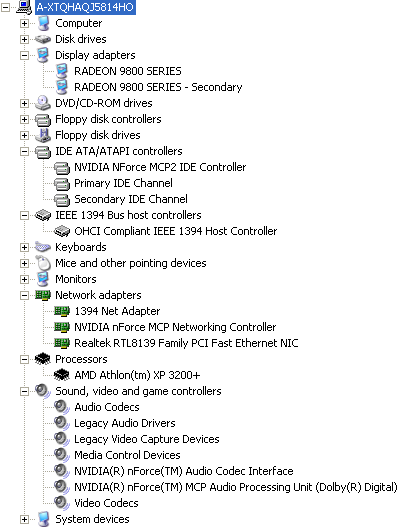System setup and notes
|
Here's a quick rundown of the test system should you wish to compare benchmark results with your own.
Common components
Software
Notes We're going back to some older ATi drivers for comparison's sake. EPoX's nForce 2 Ultra 400 board, the 8RDA3+, is considered to be a decent example of just how powerful this latest chipset is. EPoX's 8KRA2 was recently released to showcase the newest VIA SoA chipset, the KT600. Intel's potent 3.2GHz 800FSB CPU will provide direct competition, all sat on the ever-so-impressive DFI LANParty Canterwood board. The DFI NFII ULTRA was installed into a
standard Lian-Li PC60 case without issue. It powered up first time
- something that's always good to see. OS installation, too, was free from
problems. The easy-to-use driver CD made installing the various features
a doddle. Everything worked as it should do, which is not always the
case with an effectively new chipset and a manufacturer's first revision.
Dual LAN, FireWire, USB2.0, great sound and the innate ability to handle the very fastest processors are just some of the selling points for DFI. Overclocking is always fraught with a
little danger. Go too far and you may need to reinstall the OS. We raised
the Vdd to 1.8v and began raising the FSB by 5MHz at a time. The DFI
appeared pretty stable at 220FSB. It would complete multiple loops of
3DMark without fail but would soon fall over at 225FSB. A 10% FSB overclock
may sound paltry next to the 25% overclocks we've enjoyed on Intel's latest
dual-channel motherboards, but it's right on par for an nForce2 board. Most
Ultra 400 boards tend to top out at between 220 - 230FSB. The DFI's 220FSB
is commendable.
SANDRA reckons 221FSB Now we just need nForce2 boards to steadily increase their FSB limits to around 250FSB. PC4000 system RAM has been introduced recently, so it's now up to NVIDIA to take care of enthusiasts with deep pockets. The board slightly overclocked the XP3200 Barton to 2205.0MHz (11 x 200.5FSB), and that's in line with both EPoX boards. |











